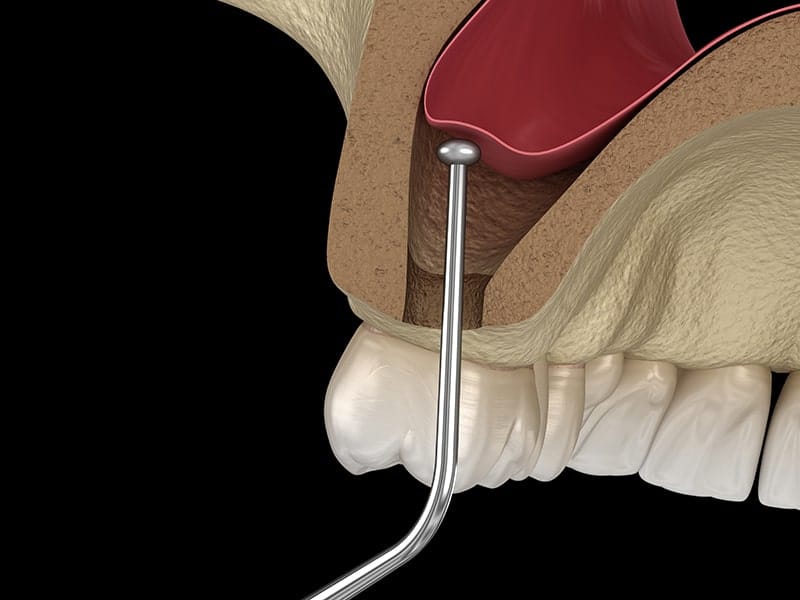
When teeth are extracted or left missing, jawbone beneath the missing tooth resorbs back into the body. This occurs because jawbone requires the stimulation of chewing to regenerate and remain healthy. During the first years that a tooth is lost, 25% of the bone beneath the missing tooth is reabsorbed into the body. Bone loss continues over the years, and is even accelerated by wearing dentures and gum disease.
Alternatives to Bone Grafting
While bone grafting is a very successful procedure, it does add cost, discomfort, and potentially a long time to dental implant procedures.
That’s why some people look for alternatives that let them get the results they want without bone grafts.

All-on-4 Replacement Teeth
If you are looking to replace an entire arch of missing teeth, All-on-4 can usually do that without need for a bone graft. That’s because the system is designed to maximize your natural bone and balance the forces of the replacement teeth. The result is fully functional replacement teeth without a bone graft.
Best of all, the procedure can replace all your teeth in one day!
Mini dental implants (MDIs)
MDIs get around the problem of short bone by being smaller so they don’t need as much bone to support them.
However, MDIs are not as strong as regular dental implants, so they’re not always appropriate. We usually use them for stabilizing dentures, not supporting replacement teeth.
Bone Grafting & Sinus Lifts for Dental Implants
Successful dental implantation relies on a stable foundation. As both vertical and horizontal bone loss occurs after losing a tooth, it may be necessary to augment the jawbone so that there is sufficient quantity and quality of bone to support an implant post. Sinus lifts are also commonly done to add vertical dimension to an implant site.
Bone grafting
The material used for grafting can be your own bone, bone from a tissue bank, bone from animals or synthetic materials. Dr. Kuhn prefers to use supplied grafting materials that don’t require removal of your own bone. Bone grafting material is inserted into your jawbone to help stimulate natural bone regeneration.
Most bone grafts are minor procedures that only require a local anesthesia, and the grafting and implant placement can frequently be performed in the same visit. With more extensive procedures, the graft will need a few months to heal prior to placement of a dental implant.


Socket preservation
Dr. Kuhn often performs socket preservation after a tooth extraction. During this procedure, the socket is packed with bone grafting material to fill the empty space and keep the ridge from collapsing. A barrier membrane is inserted to keep the material in place while the site heals.
Sinus lifts
Sinus lifts are performed when a sinus is too close to the location where a dental implant will be placed. This may be the result of missing teeth. When teeth in the back of the upper jaw are missing, the sinuses tend to expand.
A sinus lift, sometimes called a sinus augmentation, is performed by gently lifting the membrane separating the sinus from your jaw. Several millimeters of bone graft material is then packed into the space left by the sinus. Once the new bone has fully integrated with your jawbone the implant can be placed.

To make an appointment, call (910) 692-4450 or click here to request an appointment online.




